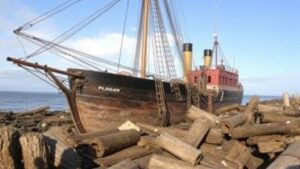Rediscovering Tools and Relics in Abandoned Distillery Locations
Rediscovering Tools and Relics in Abandoned Distillery Locations
The exploration of abandoned distillery sites provides a rich field for archaeological study and the understanding of industrial heritage. These locations house an array of relics and tools that are essential for both historical interpretation and cultural preservation. This article delves into the significance of these artifacts, the methodologies employed in their recovery, and the implications for understanding the distillation industry’s past.
Historical Context of Distilleries
Distilleries have played a vital role in local economies, especially in regions renowned for their spirits, such as Scotland and Kentucky. For example, the Old Forester Distilling Co. in Louisville, Kentucky, established in 1870, represents one of the oldest distilleries in the United States. The economic decline of some distilleries, particularly during Prohibition (1920-1933) in America, led to many being abandoned or repurposed. Understanding these locations requires an examination of their historical significance, which is closely knit with local culture and economic developments.
Methodologies for Artifact Recovery
Rediscovering tools and relics involves employing a combination of archaeological techniques and historical research. The following methodologies are commonly used:
- Site Surveys: Systematic surveys are conducted to identify and record features and artifacts within an abandoned site. The use of GIS (Geographic Information Systems) technology has significantly enhanced site mapping capabilities.
- Excavation: Carefully planned excavations help uncover artifacts buried beneath the surface. This process often involves stratigraphy, where layers of soil are studied to understand the chronological sequence of site usage.
- Artifact Analysis: Once artifacts are recovered, they are analyzed for material composition, function, and historical relevance. Techniques such as petrography and spectroscopy can be employed in material analysis.
- Historical Documentation: This includes archival research to provide context to the artifacts found. This could involve consulting historical records, newspapers, or surviving oral histories.
Significance of Tools and Relics
The tools and relics recovered from abandoned distilleries serve multiple purposes:
- Understanding Industrial Processes: Tools such as pot stills and mash tuns provide insight into the distillation processes specific to a period, illustrating technological advancements.
- Cultural Heritage: Objects associated with local traditions, such as whiskey barrels or fermentation vessels, reflect cultural practices and regional identities.
- Economic Assessment: Analyzing the remnants of distillation facilities can yield valuable data regarding the economic landscape of the time, including labor dynamics and production capacities.
Case Studies of Notable Distillery Discoveries
Notable case studies reinforce the significance of rediscovering distillery relics. historic distillery complex known as the “Lost Distillery Project” has focused on recreating the flavor profiles of distilleries that no longer exist, utilizing archival records and recovered artifacts. This approach underscores the blend of historical research and practical application in spirit production.
Also, the recent discovery of tools and barrels at the remains of the Glen Albyn Distillery in Scotland, which ceased operations in 1983, has enabled researchers to draw connections between production methods and changes in consumer demand during the late 20th century. Such discoveries highlight shifting narratives surrounding whiskey production.
Challenges and Ethical Considerations
Rediscovering tools in abandoned distilleries comes with challenges. e sites may be neglected, leading to safety risks for explorers and excavators. Also, the potential for vandalism or illegal digging necessitates ethical considerations surrounding site preservation and documentation practices.
Working with local communities can provide valuable insights and foster support for preservation efforts. Engaging stakeholders not only helps in securing access to sites but also contributes to the broader narrative of cultural heritage conservation.
Conclusion
The exploration and study of abandoned distillery locations reveal much about our industrial past. Through understanding the tools and relics found at these sites, researchers can piece together the economic, cultural, and technological narratives of distillation. Preservation and responsible excavation of these sites not only serve as a tribute to our industrial heritage but also as a foundation for future studies in anthropology and archaeology. As the interest in industrial archaeology continues to grow, the relics in abandoned distillery locations stand as critical resources for uncovering the stories of our past.
Actionable Takeaway: For those interested in engaging with this field, consider collaborating with local historical societies, participating in excavation projects, or pursuing academic research related to industrial heritage. Your involvement can contribute to broader efforts in preserving our cultural and industrial histories.



